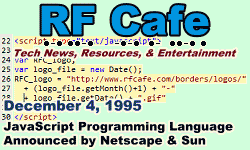|
March 1969 Radio-Electronics
 [Table of Contents] [Table of Contents]
Wax nostalgic about and learn from the history of early electronics.
See articles from Radio-Electronics,
published 1930-1988. All copyrights hereby acknowledged.
|
Having only been seriously
(somewhat) on the amateur radio scene since earning my Ham license in 2010, I previously
did not pay a lot of attention to antenna construction and interconnection to radio
gear. My experience was limited to routing 300 Ω twin-lead transmission
line from the rooftop TV antenna down to the indoor set. I also made a lame attempt
at stringing a long AM antenna wire in an attempt to pull in distant stations at
night. It worked better than the built-in coil on the ferrite rod, but was nothing
to brag about. Evidently, there was a better method than a single lead for an AM
antenna. This 1969 Radio-Electronics magazine article suggests using a
balun to create a balanced twin line from the wire antenna to the receiver, then
a balun back to single line at the receiver end. Probably not many people are using
such configurations anymore, but the subject was considered worthy of a page in
a national publication in the day. Maybe there are still people around who can use
such advice.
Noteworthy Circuit: Low-Noise Broadcast Antenna
 A good outdoor antenna is essential to satisfactory
AM broadcasting-band DX'ing. For most purposes, it may be a single-wire flat-top,
as long and as high as practical. Man-made electrical interference is one of the
major obstacles faced by the serious DX'er. Most of this comes from high-tension
power lines, automobiles and industrial, commercial and domestic appliances. It
is strongest close to the source and tapers off rapidly until it may not be objectionable
a few hundred feet away. A good outdoor antenna is essential to satisfactory
AM broadcasting-band DX'ing. For most purposes, it may be a single-wire flat-top,
as long and as high as practical. Man-made electrical interference is one of the
major obstacles faced by the serious DX'er. Most of this comes from high-tension
power lines, automobiles and industrial, commercial and domestic appliances. It
is strongest close to the source and tapers off rapidly until it may not be objectionable
a few hundred feet away.
For noise-free reception, the first step is to get the antenna as far as possible
from noise sources. The second is to replace the most-often-used single-wire lead-in
with a low-impedance balanced transmission line matched to the antenna and receiver
by transformers. A low-noise broadcast antenna like this is shown in the diagrams,
taken from Electronics Australia.
The lead-in is plastic-covered twisted-pair coupled to the antenna by T1 and
to the receiver by T2. Both transformers are wound with No. 26 enameled wire on
2" diameter forms. For T1, wind the primary with 100 turns and mark the starting
end P1 and the terminating end P2. Wrap with a single layer of insulating tape.
Add an electrostatic shield made from thin brass 1" wide and just long enough to
leave a 1/8" gap when wrapped around the center of the coil. Connect the shield
to P2 and add another layer of tape. The secondary is 25 turns wrapped around the
center of the shield. The starting end is S1, the other is S2.
Wind T2 with the 25-turn primary next to the form. Add the tape, electrostatic
shield and then wind the 100-turn secondary. Tap the secondary at every tenth turn
from the fiftieth on.
Transformer T1 should be water-proofed or saturated with coil dope and then mounted
in a shield can at least twice the coil diameter. Mount it on the mast close to
the antenna. Connect the end of the antenna to P1 and run a wire to ground from
P2. Do not ground the shield can.
Mount T2 close to the receiver and connect P2 and P1 to the ANTENNA and GROUND
terminals, respectively. Connect S1 and S2 to the lead-in. Tune in a weak station
and try all the P1 taps to find the one giving the greatest deflection on a tuning
indicator or a vtvm connected to the avc line. R-E
Posted April 19, 2023
|









